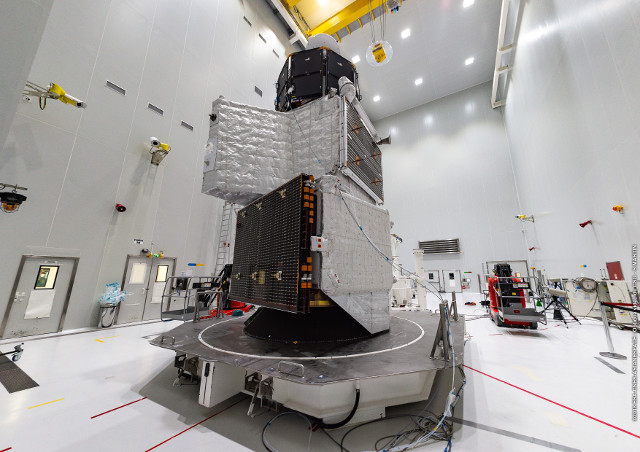
A few hours ago the two space probes of ESA and JAXA’s BepiColombo mission blasted off on an Ariane 5 ECA rocket from the Kourou base in French Guiana. Almost 27 minutes after launch, the spacecraft regularly separated from the rocket’s last stage along with the Mercury Transfer Module (MTM), which will provide the propulsion through its ion engines to transport the probes to the planet Mercury.
The BepiColombo mission was named after Giuseppe “Bepi” Colombo, who was a collaborator of NASA and the Italian Space Agency and used for the first time with NASA’s Mariner 10 space probe in 1974 the gravity-assist manoeuver, which was subsequently used by various space probes and will also be used for this mission.
The BepiColombo mission’s aim is to return to the planet Mercury after the last space probe that studied it, NASA’s MESSENGER, finished its mission crashing on the planet’s surface on April 30, 2015. This time two space agencies joined forces to send together ESA’s Mercury Planetary Orbiter (MPO) space probe and JAXA’s Mio (Mercury Magnetospheric Orbiter, MMO) space probe.
The two space probes are equipped with several instruments that are designed to study the planet Mercury to improve our knowledge of its origin, evolution, geology, atmosphere and magnetosphere. It’s the planet closest to the Sun so its orbit is the one that shows more than the others relativistic effects and they will be studied as well. The two probes’ detection will complete each other and will expand the knowledge gathered by the MESSENGER mission.
To enter Mercury’s orbit, the MTM will make the two space probes reach a very high speed and to achieve this result they were launched on the powerful Ariane 5 rocket and they’ll fly by the inner planets a number of times, gravity-assist manoeuvers to accelerate the probes. The consequence is that the orbit insertion is scheduled only for December 5, 2025.
This mission required solutions suitable to the environment that the space probes will find approaching Mercury. MOSIF (MMO Sunshield and Interface Structure) will serve as protection against extreme temperatures during the journey. The sensors were designed to operate in those conditions with protections suitable to avoid overheating or being damaged by solar radiation.
Now the MTM is carrying the two space probes on their route to Mercury to accomplish a very ambitious scientific mission. It’s a collaboration between two space agencies and for ESA it’s a very important mission as it’s its first on Mercury, developed thanks to the work of various nations that provided the many instruments that will be used.


